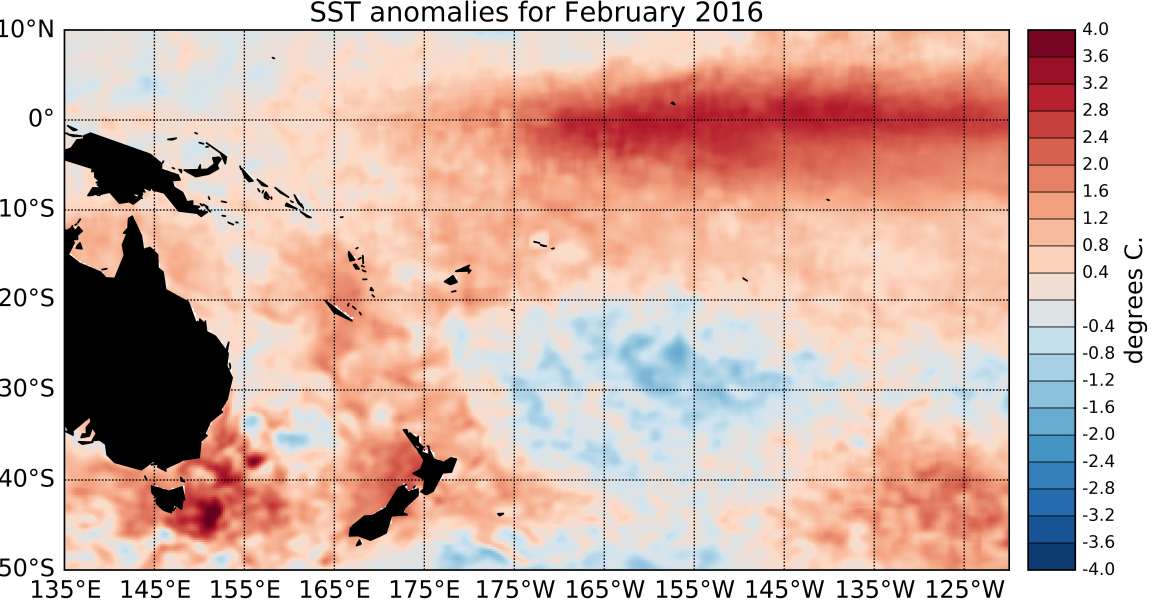Strong El Niño conditions continued during February 2016, but the event is clearly in its decay phase, having reached a peak at the end of 2015. Sea Surface Temperature (SST) anomalies in the central and eastern Pacific have weakened significantly and are now below the +2°C mark.
The latest monthly SST anomaly in the NINO3.4 region is at +1.9°C, while the NINO3 region (eastern Pacific: 90°W – 150°W) is currently sitting at +1.6°C. The NINO4 index value (in the western Pacific) is +1.3°C. Sub-surface ocean temperature anomalies in the eastern Pacific cooled further in February 2016, and retreated to east of 120°W. More significantly, the warm sub-surface anomaly is now confined above 75m depth. The Southern Oscillation Index (SOI) remained strongly negative during February, with a value similar to that of January at about -2.0. Westerly wind anomalies virtually disappeared west of the Dateline, but were still evident around 180-150°W. A contrast of weaker convection over the Maritime Continent, and enhanced convection from the Dateline eastwards, continued through February but was noticeably weaker than in January.
The Intertropical Convergence Zone (ITCZ) was clearly displaced towards the Equator in the central and eastern Pacific, and the South Pacific Convergence Zone (SPCZ) was shifted to the north and east of its climatological position, both signals being consistent with El Niño. The ENSO Precipitation Index (ESPI) reflects El Niño conditions with a value of +1.4 (value to the 6th of March 2016).
A strong Madden-Julian Oscillation (MJO) pulse reached into the Maritime Continent over the last week of February, associated with decreased convection over the Maritime Continent, but this pattern is expected to weaken over the next two weeks. International guidance indicates that El Niño conditions will continue (99% chance) over the next three months (March – May 2016) and will rapidly decay thereafter. In winter (June – August 2016), the international consensus indicate neutral conditions are most likely (56% chance), with only a 15% chance of El Niño conditions persisting through this season. For the September – November season, the models forecasts a 49% chance of La Niña conditions and 36% for neutral

